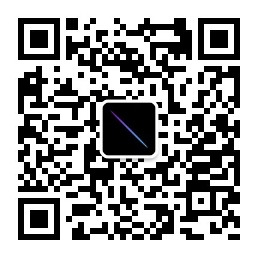Do you still remember the blogosphere around 2010? That was when I had just started blogging, and every day, what I looked forward to most was checking that tiny “Friend Links” section in the sidebar, or the “Blog Alliance” recommended posts. Clicking through always led to unexpected gems.
The blogosphere back then was truly pure. People wrote blogs because they had something to say, something to share, a desire to connect. There was no pressure to monetize, no growth hacking—just a simple wish to be read, and to read others’ wonderful thoughts.
I remember there were also some content exchange networks—not just simple friend links, but actual systems that built shared related-post connections across blogs. For example, if you wrote a travelogue about Huainan, a few other related posts from other bloggers about Huainan would be displayed below your article.
There were quite a few such networks, including one in the Chinese world called “Wumii Network”.

It felt like wandering through a giant library—you never knew what delightful surprise the next book would bring.
But the good times didn’t last. Around 2014, with the rise of the mobile internet, blog circles around the world began to decline, especially so in the Chinese-speaking world. The content exchange networks either went bad (full of ads) or shut down altogether. Many writers, seeking profit, moved on to platforms like Toutiao or WeChat Public Accounts.
On centralized platforms, related content recommendation doesn’t seem to be a problem—those platforms naturally weaken the independence of authors, hoping readers stay immersed in an ocean of related content. Things went from being too isolated to being overly connected.
Then came the rise of social media. Facebook, Twitter, Weibo—people’s attention was pulled away. Those small, beautiful blog exchange networks slowly disappeared into the long river of internet history.
In 2022, I decided to start blogging again. It’s funny when you think about it—after years of working and riding the whole mobile internet wave, I still felt that blogging was the best format for expressing complex thoughts.
When I got back into it, I noticed something interesting: a lot of people were doing the same thing. Tired of social media noise, tired of being controlled by algorithms, people were returning to the old home of independent blogs.
But there was a problem: today’s indie blogs are still too isolated.
At least we had RSS before—people subscribed to each other’s blogs. Now, barely anyone uses RSS. You might write a fantastic article, but outside of your longtime readers, it’s hard to be discovered. As a reader, it’s hard to find new bloggers who share your interests. While there are some link exchange sites in the Chinese blogosphere centered around friend links, they don’t solve the problem of content discovery itself.
I started to miss the blog exchange networks from those years.
What if we build a new one?
One night, I suddenly thought: what if we built a new blog exchange network? But one that avoids the problems of the old ones.
First and foremost, absolutely no ads. That’s the baseline.
Second, it can’t become a large, all-encompassing platform. Big platforms always end up corrupted because high operating costs force them to monetize somehow.
So what if it were federated? Just like blogs themselves—you could create your own content exchange network just like you create a blog, and have complete control over it.
You could build your own small network and only invite trusted friends to join. That way, content quality is preserved, and you avoid the pollution of commercialization.
I got to work. After a few months, I created WP Chiral Network. It’s a cross-site related posts plugin for WordPress.
The name “Chiral” comes from *Death Stranding*, the most connection-focused game in gaming history. When I decided to make this plugin, I immediately thought of the image from that game—humans rebuilding a network after a collapse. “Chiral” is originally a chemistry term for molecular handedness—something that looks similar but is a mirror image, not overlapping. That metaphor fits blog posts: similar ideas, but unique perspectives.
Technically, I chose to make it a WordPress plugin. After all, most people still running indie blogs today use WordPress.
The whole system has two components:
- Chiral Hub Core: The central node of the network, responsible for collecting and analyzing content
- Chiral Connector: Installed on each blog, responsible for syncing content and displaying recommendations
The clever part is that I used WordPress.com’s related post algorithm. Jetpack syncs content to WordPress.com, and they use an algorithm trained on billions of posts to calculate relevance. That means I didn’t have to build a recommendation algorithm from scratch, and it massively reduces the performance demand of the network.
The first time I saw the system in action was magical. I opened one of my own travelogues, and below it were a few travel posts from my friends.
Clicking in, I found thoughtful articles. No clickbait, no SEO keyword stuffing—just honest sharing of thoughts and experiences.
For a moment, it felt like I was back in 2010.
I made WP Chiral Network a completely free, open-source project. The code is on GitHub—anyone can download it, use it, or modify it to suit their needs.
Some friends asked me why I didn’t turn it into a centralized service. First of all, centralization means higher operating costs, which might force me, like the content networks that died, to add ads. And once there are ads—even I wouldn’t want to use the service. So, just like indie blogs, letting each blogger create their own small network is the best way.
So, this project is more of an emotional expression. I want to prove that in an era dominated by algorithms and advertisers, we can still create something pure.
Of course, as a federated open-source tool, it does require some technical knowledge to use. So I made a dedicated documentation site, with step-by-step instructions from installation to configuration.
If you’re blogging independently, and you miss that era when bloggers supported each other, I invite you to try WP Chiral Network.
You can create a small network with just a few close friends, or invite more like-minded bloggers. The important part is: you control the network. No outside advertisers, no algorithm black boxes—just high-quality content from people you trust.
Maybe we can’t go back to 2010, but at least in 2025, we can create something beautiful again.
Let’s reconnect the world of independent blogging together.




精选评论